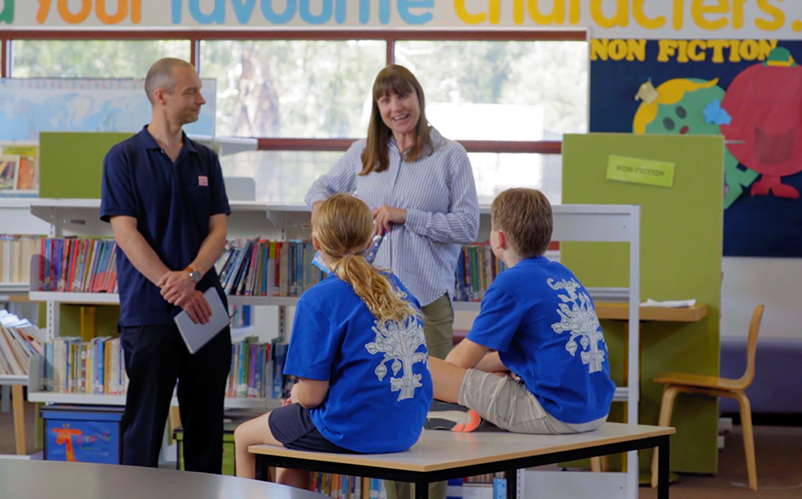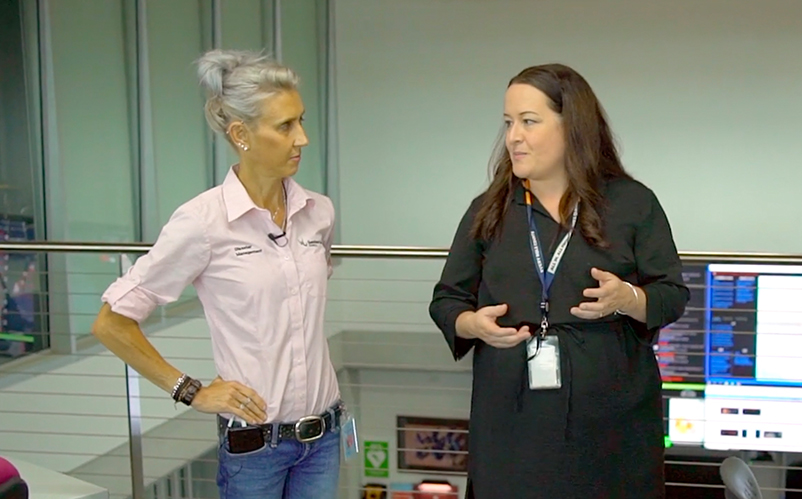A new online documentary series using the latest research from the Bushfire and Natural Hazards Cooperative Research Centre about warnings, public information and recovery helps communities to prepare, respond and recover from hazards.
The series, Driving change: the evolution of communications and warnings in emergency preparedness, response and recovery1, follows communications and engagement practitioners meeting researchers to learn how they can apply evidence-based knowledge to their work.
The series is structured around 3 themes: preparedness, response and recovery. It includes an introduction that explains the how and why behind the evolution of communications and warnings in recent years. Each theme includes videos that give viewers an idea of the topic and the full feature or in-depth interviews with researchers. The documentaries give a big-picture view of the effects of CRC research on policy and practice and how it can be used.
Dr Richard Thornton, CEO of the Bushfire and Natural Hazards CRC, said, ‘We know that emergency services agencies have used this research to improve their practices and what they deliver to their communities; whether that is educating kids in the classroom, informing the warnings that go out when bushfires flare or helping to plan for post-disaster recovery.
‘But we also know that as the role of providing public information expands to different types of organisations, more and more, people and different types of organisations outside of traditional emergency response will need to do this in the future.
‘This series showcases how the research is being used and the difference it is making to guide those who need to do this in the future,’ he said.
The series will be a valuable source of information for anyone volunteering or working in warnings, public information, community engagement, education or recovery roles and is well-suited to team training or upskilling sessions.
AIDR Executive Director, Amanda Leck, said, ‘The series will be used as companion guidance for the Australian Disaster Resilience Institute’s handbook collection. There are some real synergies between the research covered in the documentaries and the handbooks.
'Our handbooks are underpinned by research and bring this together with good practice from across Australia. These videos will support the handbooks and assist the sector to utilise research and improve practice.
‘With the research contributing substantially to handbooks, such as public information and warnings, community engagement for disaster resilience and community recovery, the series will be a significant resource for anyone learning about best practice and how to use research in their roles for preparing, responding or recovering from emergencies’, she said.

Children from Harkaway Primary School share their knowledge of bushfire to Neil Munro and Dr Briony Towers.
Image: Bushfire and Natural Hazards CRC
Preparedness
Child-centred disaster risk reduction
How can children best participate in emergency planning? According to Dr Briony Towers, the key is making the learning place-based and designing learning activities that draw on the natural and social environment that children are in every day, tailoring learning to personal interests and priorities. The presentation with Dr Towers and Neil Munro, Country Fire Authority, explores how disaster education at Harkaway Primary School on Melbourne’s urban fringe is upskilling and empowering children to prepare for a bushfire at home, at school and in their town.
Managing animals in disasters
Around 62% of Australian households have pets and a majority of these owners consider their pets to be part of the family. How can people keep their pets safe during an emergency and to what extent do pets change a person’s response? Honorary Associate Professor Mel Taylor shows that accounting for animals can lead to animal-ready communities and better emergency preparedness.
Response
Effective risk and warning communication during natural hazards
Warnings are a critical component of emergency management and the evolution of policy and practice has highlighted the power of warnings to save lives and a need to learn more about why some warnings are more successful than others. More organisations outside of traditional emergency response agencies have greater responsibility for public information and warnings. Cathy Buck, Disaster Management Coordinator at the Sunshine Coast Council in Queensland explores research findings with Professor Vivienne Tippett and Professor Amisha Mehta, Queensland University of Technology, to see how research has improved warnings issued by from the Queensland Fire and Emergency Services.
Flood risk communication
The sight of people walking, driving or playing in floodwaters is a source of great frustration for the emergency services planners. With populations in flood-prone areas growing and the frequency and intensity of flood events increasing, flood safety is still important. Katie Moulton from the New South Wales State Emergency Service shares the psychology behind people’s responses to floods and warning messages with Honorary Associate Professor Mel Taylor and Kevin Jones, Unit Commander of the Hawkesbury SES, as they visit areas flooded in the Hawkesbury region of New South Wales in March 2021.

Cathy Buck from the Sunshine Coast Council (left) and Kath Ryan (right) discuss how Queensland Fire and Emergency Services used the research to improve warning messages.
Image: Bushfire and Natural Hazards CRC
Recovery
Understanding and using recovery-capitals research
Knowledge on effective recovery has changed significantly in the past 2 decades and continues to develop through research and practice. However, recovery is an area that has traditionally been poorly understood and applied by response agencies. This research produced a disaster-recovery guide for people, organisations and governments managing emergency recovery that supports wellbeing and provides evidence-based guidance to aid decision-making. Rowena Frost, Municipal Recovery Manager for the Surf Coast Shire Council in Victoria discusses research findings and the recovery guide with Professor Lisa Gibbs, University of Melbourne as well as research to improve relief and recovery of local communities.


